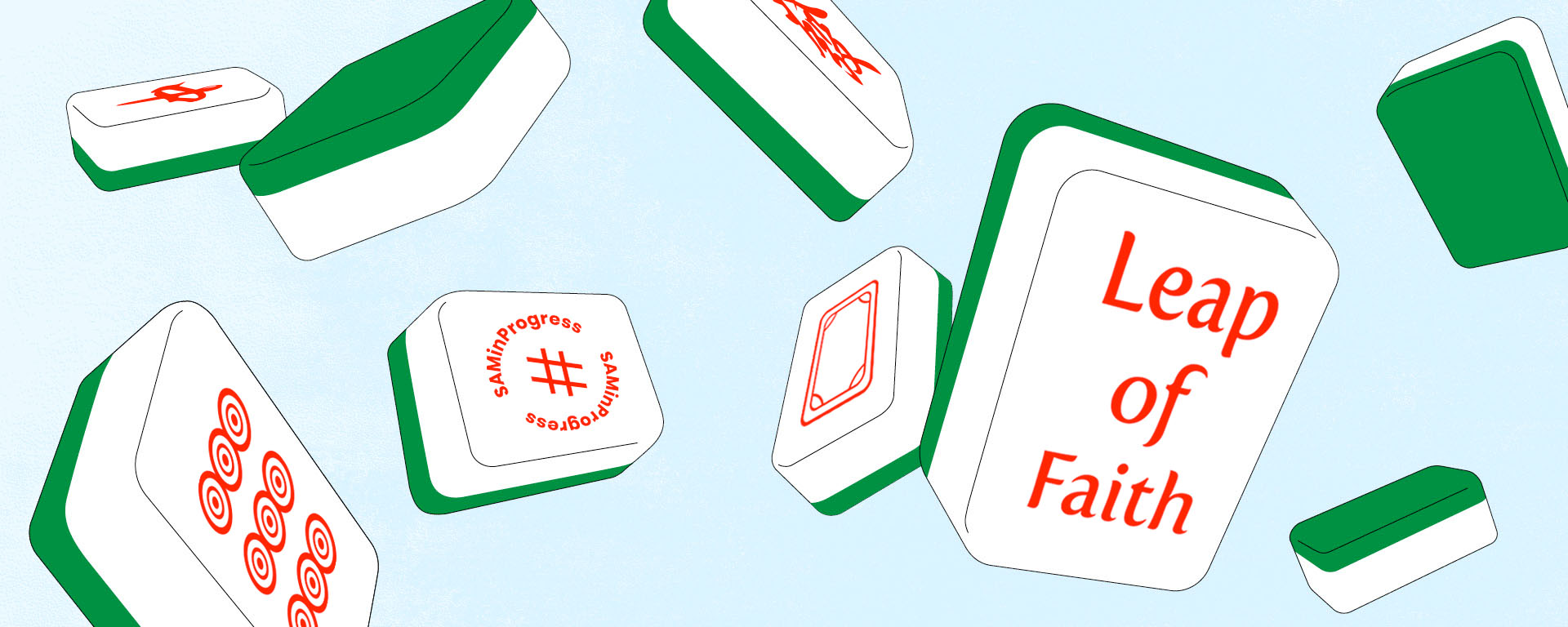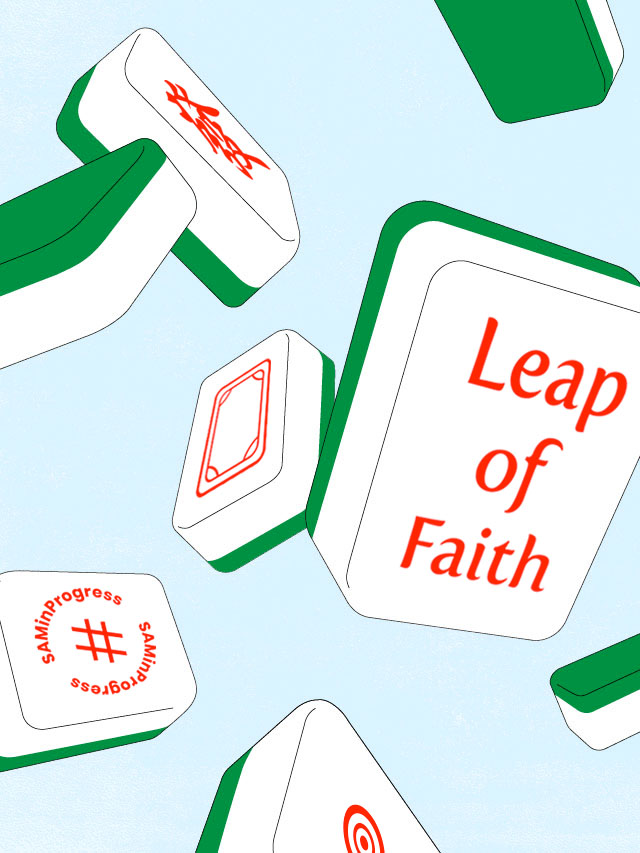Leap of Faith
The “Thirteen Wonders” is a rare winning hand in the Chinese tile-based game of mahjong – considered one of the hardest to accomplish because it comprises the least versatile and hence most discarded tiles in the game. It is also the subject of artist Kray Chen’s artwork, When the odd ones out get in, for SAM’s latest hoarding commission series. He shares why mahjong has inspired his art practice and how this new work appropriates its aesthetics to pay homage to those who transgress norms and take chances. Fun fact: The hoarding is also designed to boost SAM’s luck!
Do you play mahjong, and have you ever won with the “Thirteen Wonders”?
Kray Chen (KC): I play mahjong regularly and it is a pastime I share with family and friends. I once assembled the “Thirteen Wonders” hand when I was still in college. but because my friends and I were unfamiliar with the rules then, we were unsure if I had really “won”. Since then, I have had lots of close encounters but was never able to complete them.
This is not the first time you have presented a work inspired by mahjong. You first used mahjong tiles in a 2016 work, Waiting for the Bird. What got you interested in using them in your art?
KC: I presented Waiting for the Bird as part of my first solo show It's a Set Situation. The show was about my memories with numbers growing up – listening to 4D announcements over the radio while on my way to visit relatives where my parents would play mahjong. I remember being scolded for doing my homework near the mahjong table because they didn’t like having “shu” (Mandarin for ‘book’, which also sounds like the word for ‘losing’) near them. Since then, I developed an interest in the relations between chance, social mobility, working-class leisure, gambling culture, and how these issues are now met with a set of critical, westernised frame of mind through art-making.
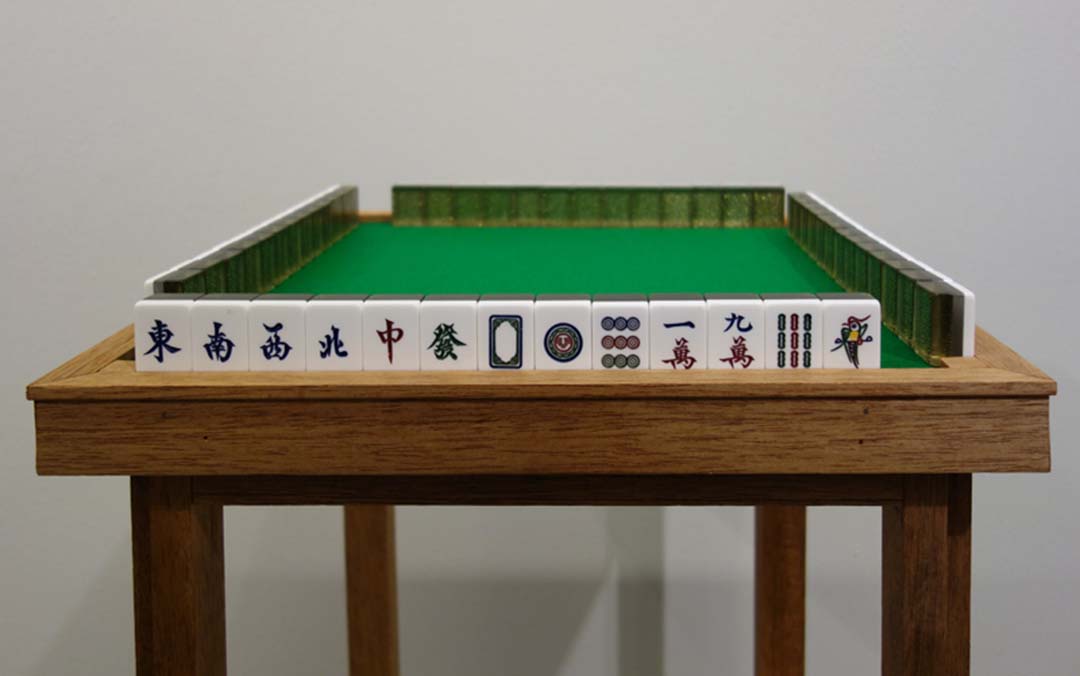
A custom-made table and mahjong tiles from It’s a Set Situation.
Courtesy of Fost Gallery
How is your use of mahjong tiles in When the odd ones out get in similar to and different from previous presentations?
KC: I work with multiple themes in my practice, hence they come and go in cycles as my thoughts evolve and change over time. The initial spark of the idea really came from a very simple premise: The hoarding is a longish space to fill. What reminds me of something longish? A set of mahjong tiles! After which, it was just about asking how to craft this message, or poetry in this case, using the vocabulary available. I started working on the combination of tiles to set the basic configuration of ideas and layered it with texts to create different entry points for the viewers. Because of the nature of the installation, I decided that the work should be readable from both ends. Hence, it became quite prose-like, where you can read it left to right or right to left.
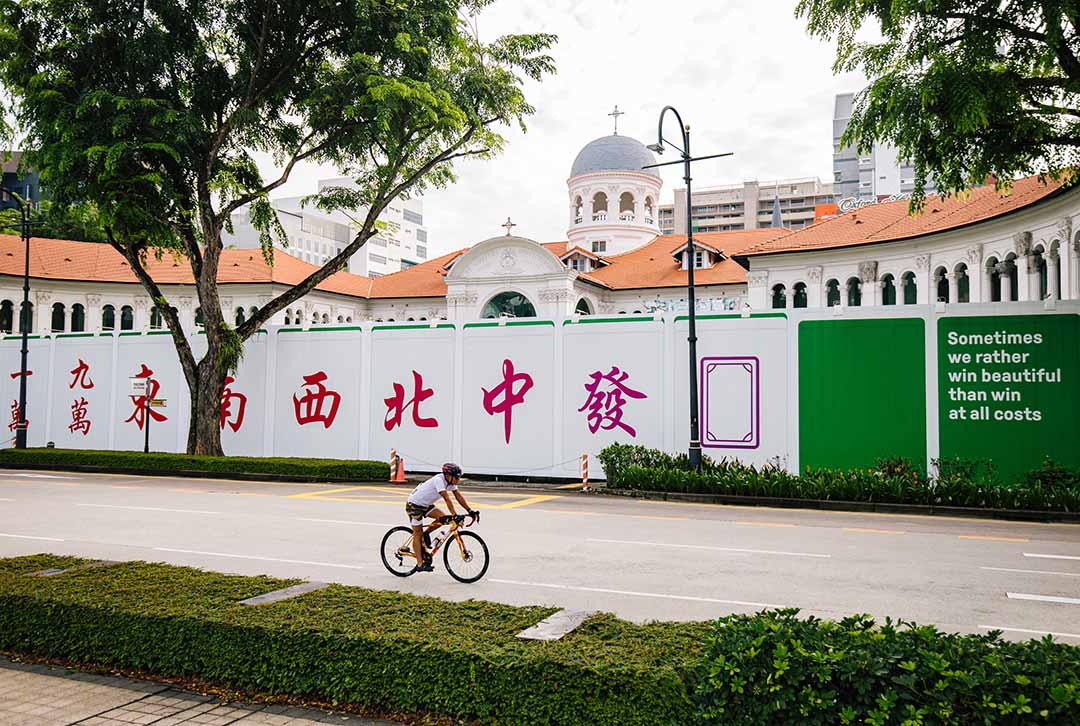
In When the odd ones out get in (2021), Kray uses the visual language of mahjong tiles to pay homage to creative mavericks.
Mahjong tiles also bring up ideas of gambling, which is a divisive issue in Singapore. How do you see it in relation to this work?
KC: Things like 4D, TOTO, mahjong, poker cards are a huge part of my memory and identity. I grew up with them and inherited from my parents the same fascination with chance and luck. I also shared countless such activities with my peers as a young adult. I battled with this thought of it being divisive but ultimately decided to honour my roots. The work is a set of ideas, crafted like prose and represented through the symbols of mahjong. Does it trigger “itchy fingers”? Yes, it does! But I’m guessing that is as far as it goes and my intention was never to tempt people.
In making the artwork on the hoarding, you invited a fengshui geomancer to do a reading of SAM's site. You carried this out previously in your Critical Fengshui (2016) series for Gillman Barracks and it is what many Singaporeans do for their living spaces too. How did the reading shape your artwork?
KC: SAM curator Yen Hui first brought up the idea that since the museum buildings are undergoing a redevelopment, it may be apt to revisit Critical Fengshui. So, we invited a master (shout out to Master Quek Ser Ming!) to start the entire process. I was hoping to use art to prime the fortune of the site, but as it turned out, SAM’s fengshui is already tiptop! The hoarding is south facing, which is perfect to boost its luck. The only other things we could do were in terms of colours – it is why the artwork is in a pink-red-purple gradient (relating to its south-facing position), with a contrasting green background.
The difference between Critical Fengshui and the SAM hoarding artwork is that fengshui is no longer employed directly as a conceptual device. Instead, it is embedded within the discussion and becomes part of the material of the work, another ingredient in this concoction.
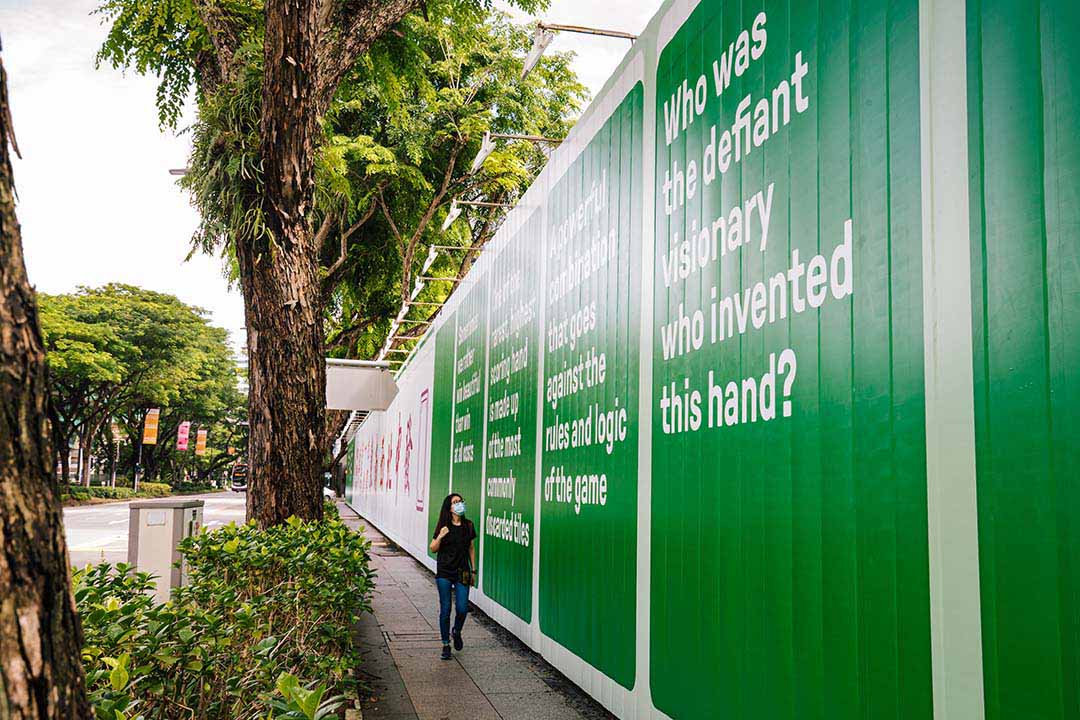
Detail of accompanying texts in When the odd ones out get in (2021).
How might divination, with its ideas of randomness, chance, control, apply in both art and life for you?
KC: It is exactly because as a society we sometimes leave nothing to chance or randomness that an all-out plan to avoid failure becomes the reason some people practise fengshui here. I find this play with perspectives really intriguing.
The brief for the SAM hoarding was to respond to the museum buildings’ on-going redevelopment. What, in your opinion, might be a “winning combination” for its future?
KC: Like the winning hand, power can come from the collectivity of differences. I hope SAM remains an institution to recognise and bring together different voices, identities and beliefs of art. Contemporary art is hypersensitive to its time and environment, and I hope the work can inspire the museum and the art communities to champion the patience, sensitivity and sensibility we need to handle the great changes in our society.
Feeling lucky? Check out When the odd ones out get in installed on the hoarding around SAM’s building on Bras Basah Road until 6 February 2022. For more information, visit https://www.singaporeartmuseum.sg/art-events/exhibitions/when-the-odd-ones-out-get-in.

